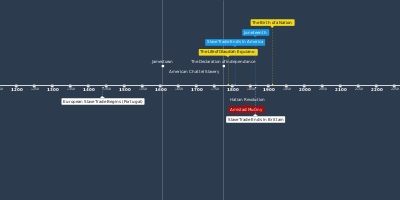17 май 1954 г. - Brown v. Board of Education
Описание:
A landmark decision of the U.S. Supreme Court in which the Court ruled that state laws establishing racial segregation in public schools are unconstitutional, even if the segregated schools are otherwise equal in quality. The Court's unanimous (9–0) decision stated that "separate educational facilities are inherently unequal," and therefore violate the Equal Protection Clause of the Fourteenth Amendment of the U.S. Constitution.The case originated in 1951, when the public school district in Topeka, Kansas, refused to enroll the daughter of local black resident Oliver Brown at the school closest to their home, instead requiring her to ride a bus to a segregated black elementary school farther away. The Browns and twelve other local black families in similar situations then filed a class action lawsuit in U.S. federal court against the Topeka Board of Education, alleging that its segregation policy was unconstitutional. A three-judge panel of the U.S. District Court for the District of Kansas rendered a verdict against the Browns, relying on the precedent of the Supreme Court's 1896 decision in Plessy v. Ferguson, in which the Court had ruled that racial segregation was not in itself a violation of the Fourteenth Amendment's Equal Protection Clause if the facilities in question were otherwise equal, a doctrine that had come to be known as "separate but equal." The Browns, then represented by NAACP chief counsel Thurgood Marshall, appealed to the Supreme Court, which agreed to hear the case.
The cases below were consolidated into
Brown v. Board of Ed:
Belton v. Gebhart (Bulah v. Gebhart)
Brown v. Board of Education
Bolling v. Sharp
Briggs v. Elliot
Davis v. County School Board of Prince Edward County
The Court's decision in Brown partially overruled Plessy v. Ferguson by declaring that the "separate but equal" notion was unconstitutional for American public schools and educational facilities.[note 1] It paved the way for integration and was a major victory of the Civil Rights Movement.
However, the decision's 14 pages did not spell out any sort of method for ending racial segregation in schools, and the Court's second decision in Brown II only ordered states to desegregate "with all deliberate speed." The language "all deliberate speed" was seen by critics as too ambiguous to ensure reasonable haste for compliance with the court's instruction. Many Southern states and school districts interpreted "Brown II" as legal justification for resisting, delaying, and avoiding significant integration for years—and in some cases for a decade or more—using such tactics as closing down school systems, using state money to finance segregated "private" schools, and "token" integration where a few carefully selected black children were admitted to former white-only schools but the vast majority remained in underfunded, unequal black schools.
For example, based on "Brown II," the U.S. District Court ruled that Prince Edward County, Virginia did not have to desegregate immediately. When faced with a court order to finally begin desegregation in 1959 the county board of supervisors stopped appropriating money for public schools, which remained closed for five years, from 1959 to 1964.
White students in the county were given assistance to attend white-only "private academies" that were taught by teachers formerly employed by the public school system, while black students had no education at all unless they moved out of the county.
This Case overturned
Plessy v. Ferguson (1896) (partially)
Cumming v. Richmond County Board of Education (1899)
Berea College v. Kentucky (1908)
Добавлено на ленту времени:
Дата:
17 май 1954 г.
Сейчас
~ 71 г назад
